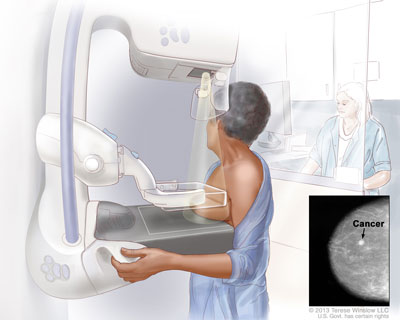Screening is a systematic examination of a “normal” person to determine the presence of any underlying disease. Screening for breast cancer entails evaluating a person who has no signs or symptoms, has a suspicious or doubtful symptom, or is ‘at risk’ for cancer. If you’re experiencing breast pain, don’t hesitate to reach out to Dr. Deepika Doshi. She specializes in providing effective Breast Pain Treatment in Borivali.
This is required for all women, but especially for those at high risk, who require more frequent screening. By the time a breast lump can be felt, it has grown to a few centimeters in size and has progressed to stage 2 cancer or higher. As the tumour grows in size, the likelihood of it spreading increases and survival decreases.

What is the age for breast screening?
Women between the ages of 20 and 40 who are at normal risk
Every 1 to 3 years, have a clinical breast examination.
Every month, perform a self-examination of your breasts.
Women over the age of 40 who are at normal risk
A qualified and trained doctor should perform an annual clinical breast examination.
Mammography is recommended every year for women aged 40 to 50, and every two years for those over 50.
Every month, perform a self-examination of your breasts.
Women who are at high risk of developing breast cancer.
A qualified and trained doctor should perform an annual clinical breast examination.
Every month, perform a self-examination of your breasts.
Annual Mammography: Beginning at the age of 25, women who have received radiation therapy to the chest should have a mammogram every year.
Annual mammograms should begin at 35 years of age or earlier for women with a family history of breast or ovarian cancer, depending on the age of the primary case.
An annual mammogram should begin around the age of 25 for women with proven genetic susceptibility to breast or ovarian cancers, or those with first or second-degree relatives with breast or ovarian cancers.
Breast MRI: An annual MRI is recommended as an adjunct to a mammogram in the high-risk group mentioned above.
What is a Clinical Breast Examination?
- This is a visit to a breast clinic with a trained and qualified breast doctor who will: evaluate the patient’s history for any evidence of breast cancer and also categorise the patient’s risk of breast cancer.
- Performs a general check-up
- Performs a breast examination to detect any abnormality
- Clinically, the goal is to detect any cancer early or to alleviate any cancer-related fears.
What is a Breast Self-Examination?
Breast self-examination is a systematic examination of the breast at regular intervals with the goal of familiarising a woman with her breasts and detecting any irregularity or lump in the breast, nipple, skin, or armpit. A woman should learn how to properly examine her own breasts in order to detect any lumps (cancerous or not). It is best done once a month, during a bath, immediately following a menstrual period.
When a breast self-examination is performed, the goal is to look for any abnormalities in the breasts rather than to look for cancers.
The procedure is as follows:
This will be demonstrated to you by your doctor.
Step 1: Examine your breasts while standing in front of a mirror, chest exposed and arms by your sides. Look for any irregularities, changes in size, shape, contour, dimpling, rash, redness, scaliness of the nipple or breast skin, nipple retraction, nipple discharge, and changes in size and shape from the previous appearance.
Then, as described above, raise your arms over your head and examine.
Then, with your hands on your waist, press inwards and tighten your chest muscles as described above, and examine. Look for any changes as you turn from side to side.
Place your hands on your waist and bend forward, keeping an eye out for any changes in breast shape.
Check the armpit with the other hand for any lumps or thickening while keeping your arms by your sides.
Any changes, no matter how insignificant, should be reported to your doctor.
Step 2: Lie down with a pillow under your right shoulder and your right arm behind your head. To feel for lumps in the right breast, use the finger pads of the middle three fingers of your left hand, not the tips. To feel every inch of breast tissue, use overlapping circular motions with your fingertips.
Light pressure should be used to feel the tissue closest to the skin, medium pressure for a little deeper feeling, and firm pressure for the tissue closest to the ribs and chest.
Begin with your underarms and work your way up to the middle of your chest bone in an up-and-down pattern. Make sure to check the entire breast, going below the breast to the ribs and up to the collarbone. Repeat the procedure on the left breast.
See your doctor if you notice any of the following:
- Breast lump, hard knot, or thickening
- Breast enlargement or reshaping
- Puckering or dimpling of the skin
- Nipple or breast skin rash, redness, or scaliness
- Nipple discharge stained with blood
- Palpable breast pain
- Hard knot in the underarm
Do not delay the treatment. Book your appointment with the Best lump and breast pain doctor in Borivali with Dr. Deepika Doshi.



